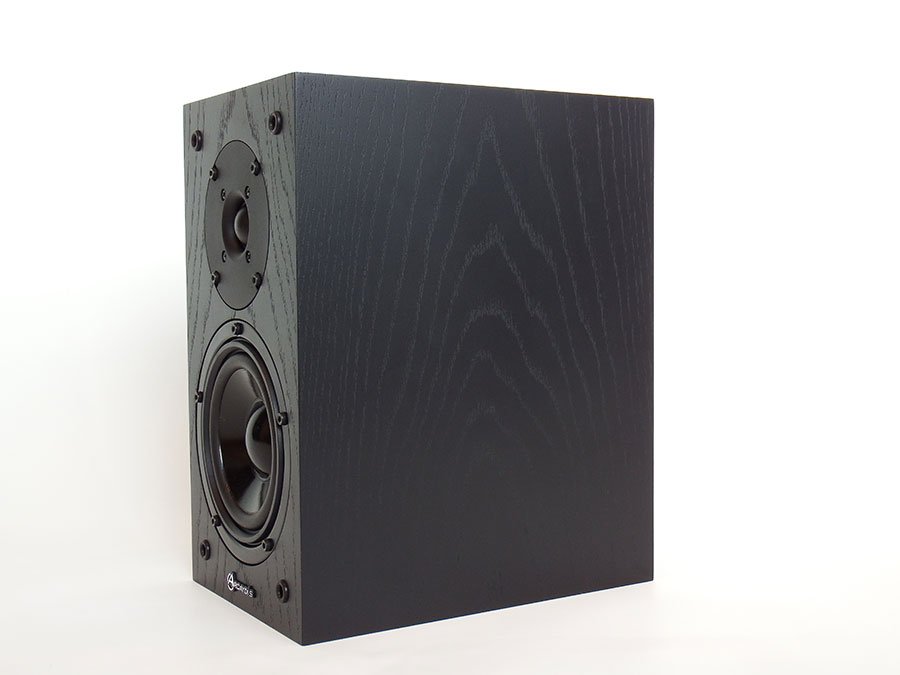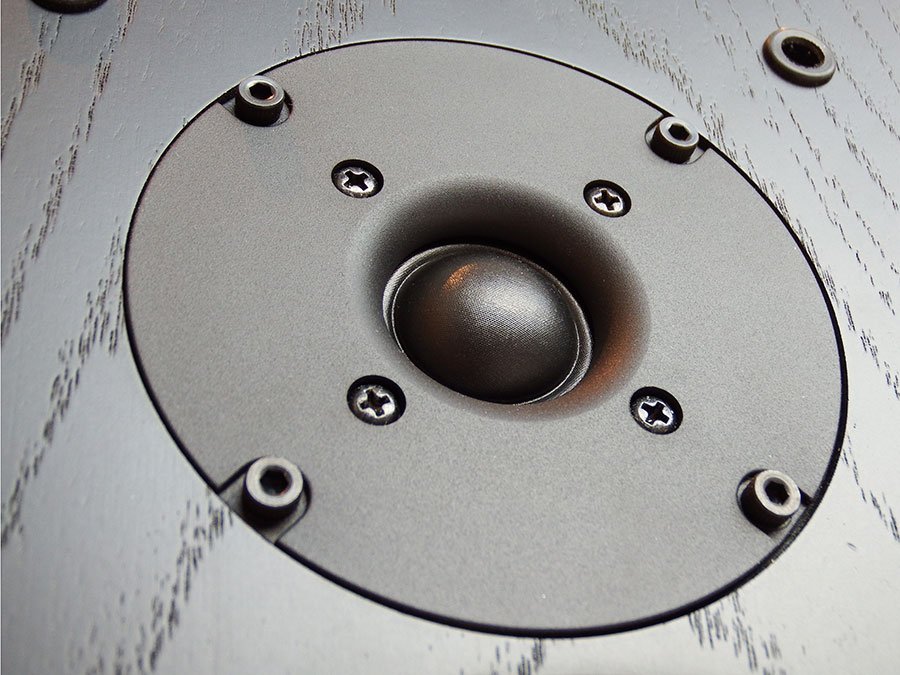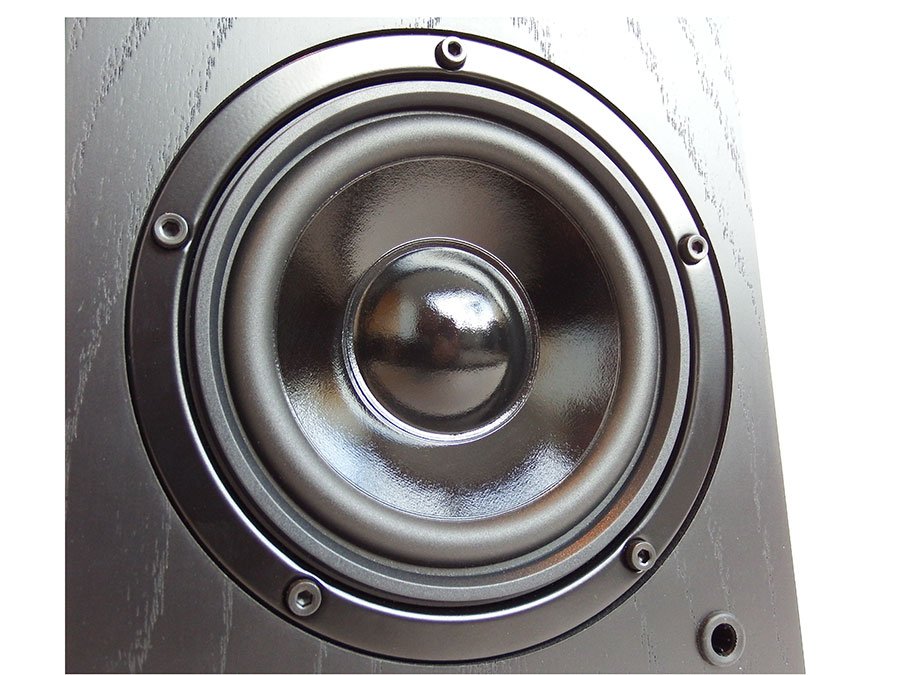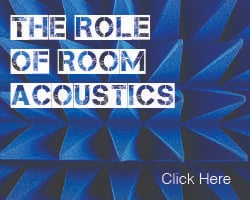Ian Ringstead recently reviewed the EB 2 from Arcaydis and now focuses on the smaller EB1S. Like the EB2 it is made in Sheffield in the UK.
The review pair of these small speakers arrived in black and were well made, just as the EB2s were. White or oak are also available as standard.
I placed them on my 28” stands and hooked them up to the Temple Audio mono blocks, ATC pre amp, Marantz SA11 S2 cd player and various turntables. Speaker cable was courtesy of Tellurium Q Black11. Immediately they began to sing in my set up and although shy in the bass department produced decent bass for their size. This price area for bookshelf speakers is fiercely competitive and there are many well established brands out there that can produce fantastic value for money models. Kef and Dynaudio are two examples that spring to mind so Arcaydis need to really stand out.
I started with a diet of vocals and acoustic music to break them in gently and get a feel for their characteristics. Compared to the many small speakers I have owned or reviewed over the years the EB1S stood up well. They were clear and relatively uncoloured which is a good sign, so I was able to audition them for some hours without any fatigue. As mentioned earlier, all small speakers struggle with bass output and handling of the lower octaves, but if well designed designers can cheat and fool the listeners ear. In any case when you listen to any component for long enough their shortcomings become less obvious. The human ear and brain are great accommodators of weaknesses and thank goodness, they are. I remember going to a Peter Gabriel concert years ago and the sound where I was sat was dreadful. This peeved me somewhat, but after 30 minutes or so I became accustomed to the venue and ended up still enjoying the concert. It’s the same with hifi.
The EB1S produced a believable sound stage and was fine in my average sized listening room. On bookshelves or in a small room they would be no problem and fit in well. Top end also was clear and not too harsh meaning a decent tweeter and crossover has been employed. Give them a good signal and they will rise to the occasion. Like the EB2’s they are bi-wireable and have decent gold-plated terminals with metal links. I tried wired jumpers which did improve the overall balance and is something I would recommend anyone to do with most speakers that have the facility. The metal plates supplied are usually cheap base metal with a very thin layer of gold on top. Give me decent copper anytime.
Rock music is at times challenging for smaller speakers, but if you are sensible with the volume control a reasonable result is achievable. The EB1S’s managed well and I could tap my feet along and get lost in the music. In my work room, upstairs where I do my soldering and mods along with model making I have a second system to keep me happy. I tried the EB1S’s in this room as it is typical of what they may be used for. On a shelf, the bass was more than adequate in the small room and I enjoyed several hours of my music without annoying my wife too much. The system was far more modest being a Sony cd player and an Amptastic amp, but it worked well. One particular Album I use a lot for reviewing is Michael McDonald’s “Blink of an eye”. This is a superb recording and fabulous music. A dynamic album it really tests a system with the complex mixing and multi tracking techniques by Ted Jensen at Sterling Sound. The rhythm section is so tight and has an infectious beat I can’t help but be moved by and never tire of listening to this album even though it is 37 years old. The EB1 worked well, but compared to my reference floor standers you realise where the extra money goes to produce a far more believable sound. The bass on my Audio Physic speakers just oozes out across the floor and is like a tidal wave of pleasure hitting you with its taught accurate and deep nature. The EB1 can’t compete but then I don’t expect it to…we’re naturally comparing apples to oranges. You still get the idea though and if you hadn’t heard this album on a good floor stander then you wouldn’t know what you had been missing.
So, in either context of a bigger system or a budget bedroom situation the EB1S performed well. This price sector is fierce and the well-established brands have a stronghold and advantage here. If you fancy something a little different from the usual brands then the EB1S is one to try out. It’s well finished and won’t offend. The original price on launch was £600 but Arcaydis decided to drop the price to £499 from £599 as they have upped production numbers and reduced overall costs which opens the market a little for these speakers and obviously makes them a more attractive proposition.
Build Quaity: Good on a par with the competition
Sound Qualit: Good with a nice openess and clarity. Bass limited by physical size but still decent.
Value for money: Compared to the tough competition in this price range good as it must be. Neat and compact.
Pros
Well made, solid design
Easy on the ear
Versatile in positioning
Cons
Bass is obviously limited
Very stiff competition in this price bracket
Price £499
Ian Ringstead
Specifications
- Dimensions: 310mm tall, 170mm wide, 250mm deep. (264mm with grille).
- Sensitivity: 86dB @ 2.8 volts @ 1 metre measured with pink noise.
- Impedance: 8 ohms nominal. 5.9 ohms minimum.
- Drive Units: 130mm paper cone bass/mid. 28mm silk dome tweeter.
- Frequency range: Useable from 45Hz to 20000Hz.
- Connections: Gold plated Bi-wire terminals.
- Colours: Natural, Black Oak Veneers and White.





















































































































































































































You must be logged in to leave a reply.